What’s Up?
For the past few hours I’ve been putting the finishing touches on the Orlando Camera Club program — Lessons from the Field/BIRDS AS ART-Style. An MP4 video of the show will be available for purchase later in the week. Jim and I are on the way up to Orlando as I type this afternoon, Monday . Thanks again to Bedford Camera for sponsoring the program. As I have a few more slides to add I am not quite done yet …
I was glad that I sold my Nikon D5 and my Nikon 80-400 VR on Monday morning, just minutes after the third price drop on each. And I learned that Galapagos participant Randy Strickland is joining us for most of the DeSoto Spring IPT. As a relative beginner he wants to make sure that he knows what he is doing once we get down to the archipelago!
More SONY News
Dear friend, multiple IPT veteran, and BAA Technical Advisor Patrick Sparkman who has committed 100% to SONY had a chance to try out a Sony Alpha a7R III this past weekend. He states that if he were a landscape photographer he would keep the one he purchased as the files are fabulous. But loves bird photography so he will be returning it. This sums up what he told me: The A7R III is not very good at all for bird photography. It is hard to live with the viewfinder blackout after using the Sony a9. Autofocus performance and frame rate pale when compared to the a9 and a7R III AF is pretty much worthless with teleconverters, especially with the 2X.


IPT Updates
I still need three folks for the Galapagos trip, and the UK Puffins and Gannets trip is wide open with only a single registrant. Please shoot me an e-mail to learn about the huge late registration discount on the Galapagos trip.
- The 2019 Fort DeSoto Spring IPT/THURS 18 APRIL through the morning session on SUNDAY APRIL 21, 2019: 3 1/2 DAYS: $1549. Limit 8/Openings: 4. Meet and greet at 7PM on the evening of WED 17 APRIL.
- The New, Expanded 2019 UK Puffins, Gannets, & Red Kites IPT. Thursday June 27 (from EDI) through Tuesday, July 9, 2019 (on the ground; fly home on Wednesday July 10.): $9,999. Limit 10 photographers/Openings: 9. This trip needs four to run. Co-leader: Peter Kes.
- The GALAPAGOS Photo Cruise of a Lifetime IPT/The Complete Galapagos Photographic Experience. July 23 to August 6, 2019 on the boat. 13 FULL and two half-days of photography: $14,499. Limit: 12 photographers/Openings: 4. Please e-mail to learn about the huge late registration discount for this trip.
BIRDS AS ART
BIRDS AS ART is registered in the U.S. Patent and Trademark Office.
Selling Your Used Photo Gear Through BIRDS AS ART
Selling your used (or like-new) photo gear through the BAA Blog is a great idea. We charge only a 5% commission. One of the more popular used gear for sale sites charged a minimum of 20%. Plus assorted fees! Yikes. They went out of business. And e-Bay fees are now up to 13%. The minimum item price here is $500 (or less for a $25 fee). If you are interested please scroll down here or shoot us an e-mail with the words Items for Sale Info Request cut and pasted into the Subject line :). Stuff that is priced fairly — I offer pricing advice to those who agree to the terms — usually sells in no time flat. Over the past year, we have sold many dozens of items. Do know that prices on some items like the EOS-1D Mark IV, the old Canon 100-400, the old 500mm, the EOS-7D and 7D Mark II and the original 400mm DO lens have been dropping steadily. Most recently the price of used Canon 600mm f/L IS II lenses have been dropping like a rock with the introduction of the 600 III. You can always see the current listings by clicking here or on the Used Photo Gear tab on the orange-yellow menu bar near the top of each blog post page.
Important Used Gear Note
All sales include insured ground shipping via major courier to lower 48 US addresses only.
Money Saving Reminder
If you need a hot photo item that is out of stock at B&H, would enjoy free overnight shipping, and would like a $50 discount on your first purchase, click here to order and enter the coupon code BIRDSASART at checkout. If you are looking to strike a deal on Canon or Nikon gear (including the big telephotos) or on a multiple item order, contact Steve Elkins via e-mail or on his cell at (479) 381-2592 (Eastern time) and be sure to mention your BIRDSASART coupon code and use it for your online order. Steve currently has several D850s in stock along with a Nikon 600mm f/4 VR. He is taking pre-orders for the new Nikon 500 P and the Nikon Z6 mirrorless camera body.
Gear Questions and Advice
Too many folks attending BAA IPTs and dozens of photographers whom I see in the field and on BPN, are–out of ignorance–using the wrong gear especially when it comes to tripods and more especially, tripod heads… Please know that I am always glad to answer your gear questions via e-mail. Those questions might deal with systems, camera bodies, accessories, and/or lens choices and decisions.
|
|
|
This handheld image was created by yours truly on the Falklands Land-based IPT. Image #1: Black-browed Albatross nesting cliff, Rookery Cabin, Saunders Island, The Falklands |
Black-browed Albatross Nesting Cliff
If you are lucky and privileged, you will get to spend a few day photographing at Rookery Cabin, Saunders Island. I know of no other location where it is easier to photograph the adults, nests, and young of this species. Why? It is relatively easy to get to and the cliffs are flatter and easier to traverse than those at other locations. Having been there three times, I can speak from experience. And yes, I have been very lucky.
|
|
|
This handheld image was also created by yours truly on the Falklands Land-based IPT. Image #2: King Shags on rocky shelf, Sea Lion Island, The Falklands |
King Shags
As to the best place on the planet to photograph King (Blue-eyed or Imperial) Shag (or cormorant) I would rate Sea Lion Island and Bleaker Island as a toss-up with Bleaker boasting a single huge colony that I believe is the world’s largest. Both are superb in the afternoons for incoming flight photography …
The Toughest Camera Body Quiz Ever
I would appreciate your thoughts as to which camera I used to make both of today’s featured images and welcome your comments on image quality as well. Lastly, which of the two is your favorite. And why? Tanks a stack.
|
|
|
Fort DeSoto in spring is rife with tame birds, many in full breeding plumage. Click on the composite to enjoy a larger version. Clockwise from upper left around to center: Laughing Gull landing on head of Brown Pelican, Laughing Gull in flight, Reddish Egret sunrise silhouette, Great Blue Heron with needlefish, Yellow-crowned Night Heron with ghost crab, Roseate Spoonbill, Sanderling in breeding plumage, and white morph Reddish Egret in glorious breeding plumage. |
The 2019 Fort DeSoto Spring IPT/THURS 18 APRIL through the morning session on SUNDAY APRIL 21, 2019: 3 1/2 DAYS: $1549. Limit 8/Openings: 4. Meet and greet at 7PM on the evening of WED 17 APRIL.
Fort DeSoto, located just south of St. Petersburg, FL, is a mecca for a great variety of migrant shorebirds, gulls, terns, and passerines in Spring. Many of the gulls and terns will be courting and copulating. There the migrants join hundreds of Florida resident egrets, herons, night-herons, and pelicans on the T-shaped peninsula. We should get to photograph one of Florida’s most desirable shorebird species: Marbled Godwit. Black-bellied Plover and Willet are easy, American Oystercatcher almost guaranteed. Great Egret, Snowy Egret, Great Blue Heron, Tricolored Heron, and White Ibis are easy as well and many of those will be in their spectacular breeding plumages. Yellow-crowned Night-Heron is a strong possibility. We may get to see and photograph the amazing heron/egret hybrid that has been present for three years. And we should enjoy some great Brown Pelican flight photography. In addition, Royal, Sandwich, Forster’s, and Caspian Terns will likely provide us with some good flight opportunities as well. Though not guaranteed, Roseate Spoonbill and Wood Stork might well be expected. And we will be on the lookout for a migrant passerine fallout in the event of a thunderstorm or two. Yikes, I almost forgot to mention that nearly all of the birds are ridiculously tame!
|
|
|
Yes, Fort DeSoto in spring is rife with tame birds, most in breeding plumage. Click on the composite to enjoy a larger version. Clockwise from upper left around to center: breeding plumage Dunlin, dark morph Reddish Egret displaying, Laughing Gull vertical front-end portrait, Laughing Gull with prey item, landing on head of Brown Pelican, breeding plumage Royal Tern displaying, Royal Terns — pre-copulatory stance, Laughing Gulls copulating, Laughing Gull head portrait, breeding plumage Sandwich Tern with fish, and a rare treat, a breeding plumage White-rumped Sandpiper. |
Just some of the stuff you will learn …
On the IPT you will learn basics and fine points of digital exposure and to get the right exposure every time after making a single test exposure, how to approach free and wild birds without disturbing them, to understand and predict bird behavior, to identify many species of shorebirds, to spot the good situations, to choose the best perspective, to see and understand the light, and to design pleasing images by mastering your camera’s AF system. Most importantly you will surely learn to evaluate wind and sky conditions and understand how they affect bird photography. And you will learn how and why to work in Manual mode (even if you’re scared of it).
|
|
|
Again, Fort DeSoto in spring is rife with tame birds, most in breeding plumage. Click on the composite to enjoy a larger version. Clockwise from upper left around to center: Laughing Gull in flight, Yellow-crowned Night-Heron, Sandwich Terns copulating, Roseate Spoonbill, Great Egret with reflection, breeding plumage Short-billed Dowitcher, American Oystercatcher, Royal Tern, white morph Reddish Egret, and Snowy Egret in marsh. |
What we do
There will be seven shooting sessions in all: four 3+ hours morning session and three 2 1/2 hour afternoon sessions. There will be a Photoshop/image review session during or after lunch (lunch is included) on each of the three full days. That will be followed by Instructor Nap Time.
The best airport is Tampa (TPA). Once you register, you will receive an e-mail with the hotel/lodging information.
|
|
|
You got it, Fort DeSoto in spring is rife with tame birds, most in breeding plumage. Click on the composite to enjoy a larger version. Clockwise from upper left around to center: Roseate Spoonbill, immature Brown Pelican in flight, the heron/egret hybrid, American Oystercatcher feeding, immature Royal Tern on railing, Great Egret morning silhouette, Black Skimmer in surf, and underside head portrait of Great Blue Heron. |
Signing Up
A $500 deposit is due when you sign up and is payable by credit card. Balances must be paid by check after you register. Your deposit is non-refundable unless the IPT sells out with eight folks so please check your plans carefully before committing. You can register by calling Jim or Jennifer during weekday business hours at 863-692-0906 with a credit card in hand or by sending a check as follows: make the check out to: BIRDS AS ART and send it via US mail here: BIRDS AS ART, PO BOX 7245, Indian Lake Estates, FL 33855. You will receive a confirmation e-mail with detailed instructions, clothing, and gear advice. Please remember that the meet and greet will take place on the evening of WED 17 APRIL. Please shoot me an e-mail if you plan to register or if you have any questions.
|
Folks attending this IPT will be out in the field early and stay late to take advantage of sunrise and sunset colors. Click on the composite to enjoy a larger version. Clockwise from upper left to center: Long-billed Curlew, juvenile Tricolored Heron, Marbled Godwits, Great Blue Heron, juvenile Pectoral Sandpiper, Wood Stork, smiling Sea Scallop, Ruddy Turnstone scavenging needlefish, Great Blue Heron sunset silhouette at my secret spot, and southbound migrant tern flock blur. |
Early and Late
Getting up early and staying out late is pretty much a staple on all BIRDS AS ART Instructional Photo-Tours; on this particular trip we will get lots of sleep as the days are short. Being in the field well before the sun comes up and staying out until sunset will often present unique photographic opportunities, opportunities that will be missed by those who need their beauty rest. I really love it when I am leaving the beach on a sunny morning after a great session just as a carful or two of well-rested photographers arrive.
Help Support the Blog
Please help support my efforts here on the blog by remembering to click on the logo link above each time that you shop Amazon. That would be greatly appreciated. There is no problem using your Prime account; just click on the link and log into your Prime account. With love, artie
If In Doubt …
If in doubt about using the BAA B&H affiliate link correctly, you can always start your search by clicking here. Please note that the tracking is invisible. Web orders only. Please, however, remember to shoot me your receipt via e-mail.




Please Remember to use my Affiliate Links and to Visit the New BAA Online Store 🙂
To show your appreciation for my continuing efforts here, we ask, as always, that you get in the habit of using my B&H affiliate links on the right side of the blog for all of your photo and electronics purchases. Please check the availability of all photographic accessories in the New BIRDS AS ART Online Store, especially the Mongoose M3.6 tripod head, Wimberley lens plates, Delkin flash cards and accessories, and LensCoat stuff.
As always, we sell only what I have used, have tested, and can depend on. We will not sell you junk. We know what you need to make creating great images easy and fun. And please remember that I am always glad to answer your gear questions via e-mail.
I would of course appreciate your using our B&H affiliate links for all of your major gear, video, and electronic purchases. For the photographic stuff mentioned in the paragraph above, and for everything else in the new store, we, meaning BAA, would of course greatly appreciate your business. Here is a huge thank you to the many who have been using our links on a regular basis and those who will be visiting the New BIRDS AS ART Online Store as well.
Be sure to like and follow BAA on Facebook by clicking on the logo link upper right.
Typos
In all blog posts and Bulletins, feel free to e-mail or to leave a comment regarding any typos or errors. Just be right :).


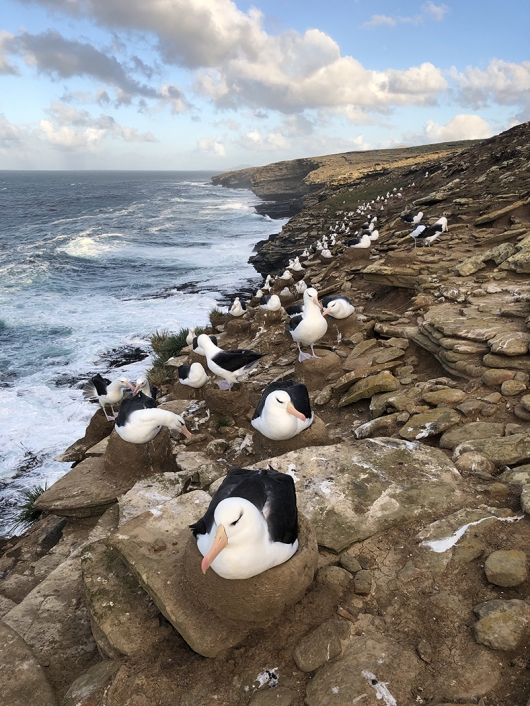
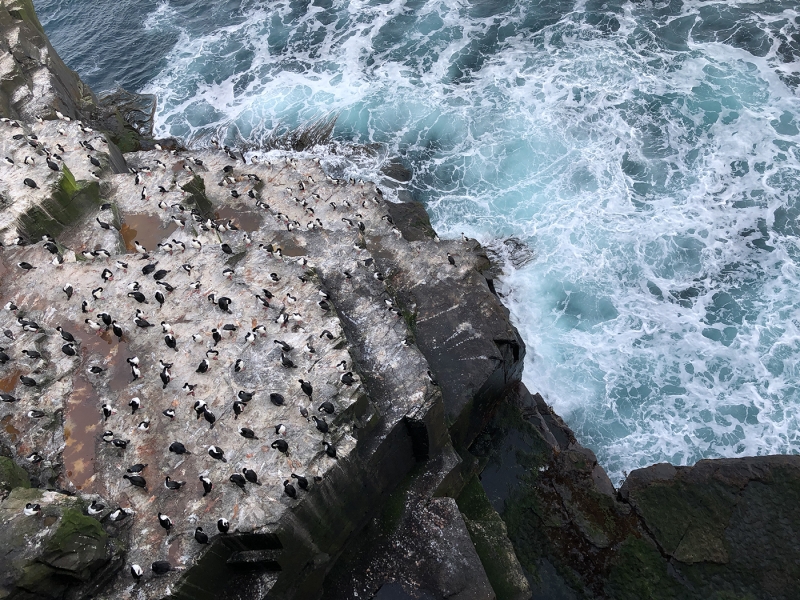
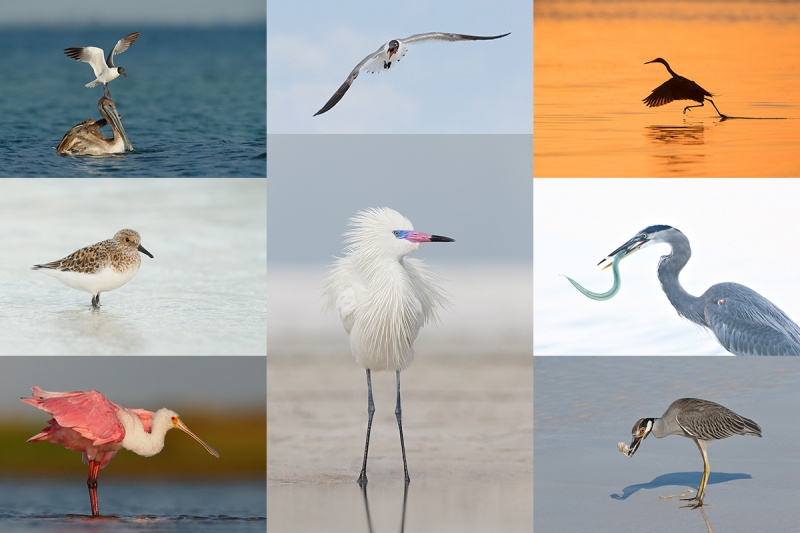
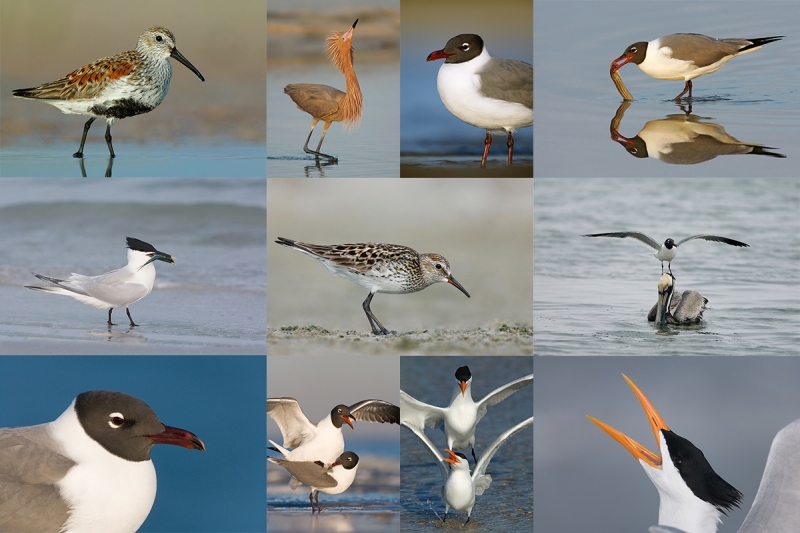
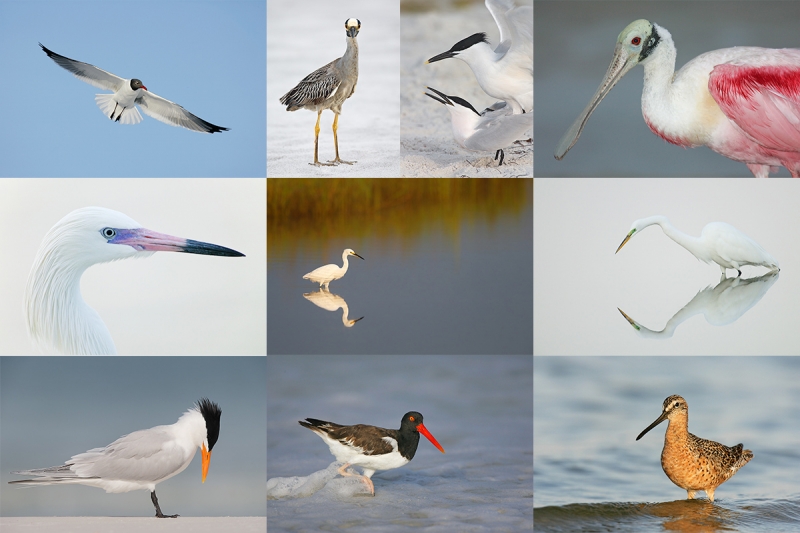
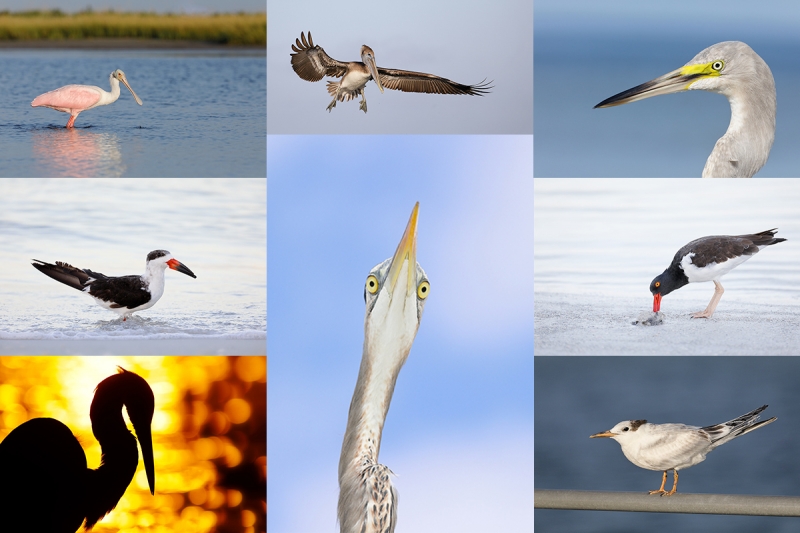














Doesn’t the autofocus of the A7rIII only go up to f8? Wouldn’t that make the 2x TC with the 100-400 literally useless?
Patrick says that it attempts to focus with the 2X at f/11 and sometimes does. In other words, literally useless.
with love, artie
I think that a cell phone was used for both pictures. Probably an iphone since this is what you are using. I am pretty sure about the first one because of the huge depth of field and the Chromatic Aberration which is evident on the heads of the nearest two birds even in this size.
However the quality is very decent for cell phone pictures. I hope that I didn’t make a very big mistake 🙂
I have both the a9 and a7rIII, and I agree that the A9 is my favorite for birding and especially for birds in flight, but I don’t have any problems with the a7rIII when using it for most bird type shots. The a9 is like my 1DXII and the a7rIII is very much like your beloved 5DSR and D850. Keep in mind like any camera, there is a new learning curve and Sonys are completely different and takes some time to learn how to use and work with them. Anyway that my two cents worth.
Thanks Tom, Don’t forget that I loved the 5D Mark IV even more than the 5DSr …
with love, artie
I like the 2nd image due to getting a different perspective of the birds, cliffs and water. This image looks like a d850 image with the amount of detail.
I like the 1st photo best shows the birds namesake brow. I have no clue as to camera etc. 2nd shot almost looks like a drone shot so maybe that cell phone guess was a good one. Most durable… The one you dropped that by all rights should have gone belly up but survived with nary a scratch to remember it by.
Can you video tape the slide teaching program you are presenting and make it available as a download? Please, I for one would really be interested in viewing and learning from your demonstration and teaching. Learning a little everyday. Jeff
Great idea. I had already planned on re-doing the program at home and doing a Camtasia capture. I should get to that in a day or two. I will be selling the MP4 video of the program for a measly $10.
with love, artie
Artie…
I love the first image, and that photo was most likely taken with a Nikon 850. Nice composition and nice perspective of the birds, their resting place and the ocean.
Take care and see you soon!
Louie
Hi Artie
I just love that first image! My favourite of the two by far. I love that composition, and perspective. I think I spend far too much time going for tight shots and miss out on great opportunities like this.
I believe the first was taken with your Nikon.
I like the first image the best. Image quality is nice on both but not amazing. I’m going to guess that both were made with your iPhone, which if I remember correctly from an earlier post here is an 8+.
I prefer the first image as I can better identify that the birds are nesting than in the second file where they are more distant. I do not relate much to any activity. I like the exposure and texture of the water in shot 2 and the somewhat random or abstract pattern (can anything be random and patterned at the same time?) of the birds on the rock surfaces.
As far as what camera system was used to make the images I have no clue. Pretty wide lens used for first (14 to 20 mm), longer for second shot, though not too long (100 to 200mm, maybe).
All the best. Wish I could be at the presentation tonight, but am 3 time zones away. Be well